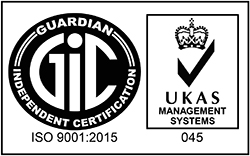Type of valves used in piping

What is a valve?
A valve is a device that controls the flow of fluids by opening and closing. Any substance that can flow freely is considered a fluid in a scientific setting, and valve can utilised either liquids or gases. Also, it regulates the flow of fluid in hydraulic, pneumatic, irrigation, plumbing, and motor systems. The venerable pre-transistor vacuum tube is sometimes referred to as a valve.
Moreover, the simplest valve is one-way flap devices that open with backflow pressure and permit flow in one direction and shut to stop flow in the opposite direction. In essence, this is how the heart’s valves function. Furthermore, it can operates manually or with a motor, and in addition to being powered by the physics of flow. They can also be powered by pressure or temperature.
Other than that, levers, pedals, hand knobs, or wheels are commonly used to crank a screw-turned stem on manual valve. A valve may include geared mechanical inner workings that activate the valve ball or disc against its seat, which may contain a gasket. Also, it can control fluid to onw or more than four ports.
The functions of a valve in piping systems.
Valve plays an important role in boosting process efficiency, improving quality control, and maintaining process safety and reliability. The primary consideration in valve selection is the valve’s desired function. It is also used in piping systems for a variety of reasons, including:
- Initiation or cessation of fluid flow.
- Controlling flow rates in a pipe system.
- Pressure regulation and fluid temperature in a pipe system.
- Redirecting flow from one path to another and restricting flow for system balance or to avoid over-pressurization.
- Prevent fluid reverse flow
- In the event of a system breakdown, the flow is halted.
- Improving safety in a pipe system by alleviating pressure or vacuum.
Type of Valves.
Different types of valves use in different sectors. These are the type of valves:
i. Ball Valve
A spherical plug is used in ball valve. The spherical plug serves as a control element. It is commonly utilised in the chemical process industries. Moreover, it is utilised in situations where throttling and shutting down are essential. It has excellent flow properties. In addition, it is made up of a two-way globe with a ball that spins between robust seats. It is small, takes little maintenance, and does not require lubrication. Moreover, it is offered in three different patterns: venture, reduced, and full port. It can be closed or opened by turning the ball a quarter turn. And also, it does not provide adequate throttling. It is available in sizes ranging from 6mm to 900mm and it can withstand pressures of up to 500 kg/cm and temperatures of up to 300°C.
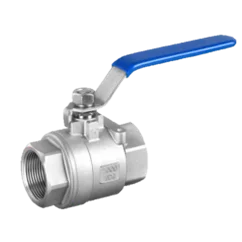
ii. Gate Valve
The gate valve operates through the reciprocating movement of a disc within its body. It can have either a single or double disc. It is used to turn off the power. The shut off of a twin disc valve is satisfactory.
Besides that, the stem of a gate valve might be rising or non-rising. It come in a variety of diameters ranging from 12mm to 30mm and even larger. Also, it is lightweight, inexpensive, and has a low pressure drop. Hence, it provides accurate flow control. It also can withstand pressures of up to 20kg/cm2 and temperatures of up to 675°C. Cast iron, carbon steel, stainless steel, ductile iron, bronze, nickel alloys, and other materials are used to create gate valves. Gate valve of the rotating disc type with a quick action lever actuator
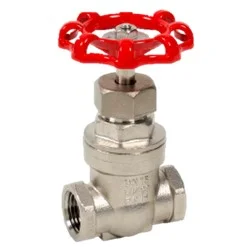
iii. Global Valve
Global valve works via the reciprocating movement of a disc or plug. The disc or plug slides toward or away from the seat, either stopping or permitting fluid passage. The disc or plug is inserted into the valve seat. Therefore, it is detachable. Besides that, the pressure drop in the globe valve is significant.
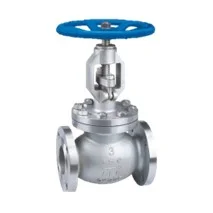
iv. Check Valve
A check valve is used in piping systems to prevent backflow. The pressure of the fluid travelling through the pipeline causes the valve to open, Reverse flow prevents the fluid from flowing in the opposite direction by closing the valve. External control is not required for check valves. They operate automatically and hence lack an operating handle or stem. The most basic check valves have a one-way flap mechanism.
Moreover, check valves are typically small, straightforward, and affordable. It is used in a variety of industrial applications, including feed water control systems, gas systems that combine various gases into a single gas stream, and fuel and oxidizer mixing systems. Also, they are frequently employed in household applications to avoid the mixing of a hygienic potable water supply with water from filthy systems.
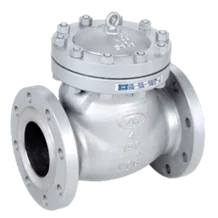
v. Needle Valve
A needle valve has a plug. The plug is tapered and fits snugly into the seat. Furthermore, the annular space between the tapered body of the plug and the seat controls the flow rate. It is also utilised for small, precise flows. The valve size ranges from 3mm to 25mm, and it can withstand temperatures and pressures of up to 260°C and 650 kg/cm respectively.
Other than that, they are used to reduce pressure variations by controlling actuating air or hydraulic fluid. The needle valve can be made of bronze, brass, or stainless steel, among other materials.
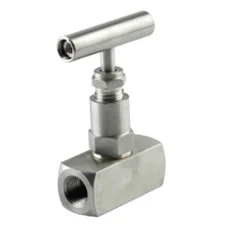
vi. Butterfly Valve
The regulating element in a butterfly valve is a disc known as a blade, vane, or flapper, which rotates in a horizontal or vertical direction and permits fluid to flow, Throttling or on-off operation at modest pressure drop is possible with a butterfly valve.
Besides that, it is inexpensive, simple to install, and prevents solids from accumulating. Also, butterfly valves can be screw-type or wafer-type. It can be operated manually, electrically, or automatically. Other than that, a butterfly valve of the water kind is depicted. It can be utilised for vacuum or pressure applications up to 80 kg/cm2. It is available in sizes ranging from 50mm to 900mm. The blade or flapper can be constructed or rubber, neoprene, or chloro sulphonated polyethylene and more.

vii. Safety Relief Valve
The fundamental purpose of Safety Relief Valve is to protect people, property, and the environment. It is a safety device that protects a pressurised vessel or system from over-pressure if all other safety devices fail. It is intended to open and relieve excess pressure form vessels or equipment before closing and preventing additional fluid, gas, or steam discharge once normal conditions have been restored.
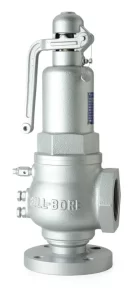
How are Valves in Piping Systems Classified?
Valve classification can be divided into various categories. They are classified according to function, working mechanism type, end connections, mechanical motion, construction material, pressure and temperature ratings, and port size. When selecting a valve, it is critical to analyse each of these classifications to ensure that the it is appropriate for the application.
(A) Valve Function
Valves are used in processes to perform a variety of purposes. They can be used to start and stop the flow as well as to adjust the flow and pressure. Also, they may be necessary to control the flow direction or to improve process safety. The types are classed based on flow control as isolation valves or regulation valves.
(I) Isolation valves
Isolation valves are meant to either entirely limit or enable fluid flow without obstructing it. Hence, they should not used continuously in the partially open position because they may provide poor flow control or suffer wear damage over time.
(II) Regulation valves
Regulation valves are used for precisely regulating pressure and fluid flow. They can be utilised in procedurres that require a partial open or closed state in a safe and efficient manner.
However, some valves can do both jobs, while others are only suggested for one.
(B) Operating Mode
Based on how they are manipulated, valves are classed as manual, actuated, or automatic.
(I) Manual Valves
Manual valves are usually actuated by hand using wheels, levers, pedals, knobs, or chains. They can be mechanically geared to change movement direction and/or improve operation speed or torque.
(II) Actuated Valves
Valves are frequently coupled to electric motors, pneumatic systems, hydraulic systems, or solenoids in high-precision or large scale applications to enable remote operation and automation of valve function.
(III) Automatic Valves
Some valves are actuated automatically when a certain flow condition is satisfied. During backflow, for example, check valves close without the need for external intervention. Similarly, when an over-pressure condition is identified, pressure release valves are engaged automatically.
(C) End Connections
Valves are joined to pipes by joints, which can be screwed, flanged, or welded. The following are some examples of common valves ends:
- Flanged end valves: A flange is a plate or ring at the end of a pipe or valve that forms a rim; two flanges are fastened together to form a connection.
- Screwed end valves: Screwed end valves feature threaded joints that are screwed to the end of a pipe or another fitting.
- Socket welded valves: The pipe is inserted and welded into a socket.
- Butt weld valves: The valves have beveled edges that correspond to a matching bevel on the pipe.
- Wafer type valves: The narrow valve body is located between two pipe flanges, with bolts around it. These valves are typically used on small-space systems.
(D) Mechanical Motion
Valves are classed as Linear Motion Valves or Rotary Motion Valves based on the mechanical motion of the closing member. A linear motion valve is one in which the closing element of the valve moves in a straight line to allow or stop flow. A rotary motion valve is one in which the closing element rotates or moves in a circular path.
Valves are also classed as multi-turn or quarter turn depending on how far the handle/wheel must be turned to completely open or close the valve. Rotary motion valves frequently require only a quarter turn (90°) of the stem to transition from completely open to fully closed.
(E) Construction Material
Depending on the intended temperature and pressure ratings, durability, and use, the valves body can be made of stainless steel, alloy steel, brass, cast iron, or plastics. To achieve the appropriate amount of seal and temperature/pressure ratings, the gasket, packaging, and valve seat are often composed of PTFE, ROM, FKM, PA, EPDM, or NBR.
(F) Pressure-temperature ratings
Valves can also be categorised based on their pressure and temperature specifications. These ratings describe the maximum permitted pressure and temperature levels that the valve may withstand safely.
Looking for flanges, fittings, pipes and valves?
Saliran Group has over 10 years of experiences in trading of a wide range of flanges, pipes, valves, fittings, and related parts and accessories (“PVF products”) as well as steel products with numerous happy customers all around the world. We supply a variety of valve types such as Ball Valve, Gate Valve, Global Valve, Check Valve, Needle Valve, Butterfly Valve, and Safety Relief Valve.
Click on the link below to contact us now!

